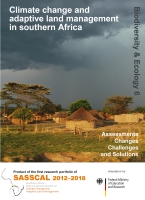
|

Department of Biology Institute of Plant Science and Microbiology |
| Division BEE > Biodiversity & Ecology > Vol.6 > Article 6.0 |
Biodiversity & Ecology
Journal of the Division Biodiversity, Evolution and Ecology of Plants , Institute for Plant Science and Microbiology, University of Hamburg.
Forest resources Overview article Open Access Woodland resources and management in southern Africa
Resumo: Os países da África Austral têm uma cobertura fl orestal média de 32%, com a maioria das fl orestas situadas nos trópicos. Estas fl orestas secas ou húmidas são decíduas, com algumas espécies de folha perene. A copa aberta permite que luz sufi ciente chegue ao solo para permitir o desenvolvimento de uma camada rica de herbáceas. No geral, estas fl orestas são referidas como matas. O artigo apresenta uma visão geral das matas de Miombo, Baikiaea e Mopane de Angola, Zâmbia, Namíbia e Botswana, concentrando-se na sua composição e recursos lenhosos e não-lenhosos. A plantação fl orestal é brevemente discutida, com a maior parte da informação proveniente da África do Sul, a qual tem a maior indústria comercial de exploração fl orestal na região. São destacadas as ameaças às matas da África Austral e é resumido o estado actual de monitorização e gestão das matas.
Suggested citation: |
